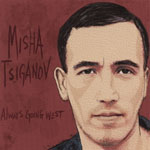Home » Jazz Articles » Book Review » The Ragtime Kid
The Ragtime Kid
 The Ragtime Kid
The Ragtime KidLarry Karp
Poisoned Pen Press
ISBN: 10: 1-59058-326-4
ISBN: 13: 978-1-59058-326-5
2007
"Brun Campbell heard a piano, and that was all she wrote. Any time Brun heard a piano, that was all she ever wrote. The piano was Brun's one true love, and when it called him, the boy dropped whatever he was doing and attended.
With these words, Larry Karp introduces The Ragtime Kid, a historical novel of music, murder and intrigue, set in Oklahoma and Missouri in the closing years of the 19th Century. You see, the style of piano-playing that so totally fascinated the white youngster was ragtime; the tune that captured his heart was Scott Joplin's "Maple Leaf Rag;" and the adventure upon which the 15-year-old runaway subsequently embarked took him to Sedalia, Missouri, seeking piano lessons from the Negro (as he would then have been described) composer Joplin, who made Sedalia his home.
Most of the characters in this story, including Campbell, Joplin, Joplin's best friend (Otis "Crackerjack Saunders), black musician Blind Boone, Sedalia's mayor, police chief, and prominent civic boosters, music store proprietor John Stark and lawyer Bob Higdon, who befriend the young Campbell, and many others are historical figures of the time; as Karp relates in the book's concluding chapter, "The Last Word, only seven major characters are wholly fictitious. From these elements the story is crafted; in the presence of many "whos, "whats, "wheres, and "whens, the tale is Karp's attempt to supply possible answers to some of the elusive "whys, with which history is considerably less forthcoming. For example, we know that, on August 10, 1899, John Stark, a white man, signed a contract with the young black composer, Scott Joplin, to publish Joplin's tune "Maple Leaf Rag. This contract granted Joplin a penny a copy royalty on sale of the music, at a time when black composers were lucky to get $10-20 outright for sale of a piece of music. Why was this royalty stipulated?
So, there is the premise, and Karp does a masterful job of pulling it off. Although some of the characters are a bit stereotypic (and their racism, a bit predictable), Karp's character development, especially of Campbell, Stark and Joplin, is rich and appropriately complex. One might argue that the fictitious murder and its solution were not necessary to the story. On the other hand, the mystery and intrigue do not intrude in the story-telling; they further rather than distract from the plot; they engage the reader's emotions; and they help hold the reader's attention.
Ragtime music is front-and-center as a focus of the story, and portraying its appeal, verve and charm is a major task of the author's. Karp is not a musician; in fact, he has spent most of his professional life as a physician, forsaking that practice for only the past decade, during which he has written mystery novels full-time. But he has been a long-time ragtime music buff, and he has here done a superb job of making ragtime's musical composition and performance alive and understandable to novice and musician alike.
In addition, Karp spent countless hours in Sedalia, doing research on the town's physical layout, civic government, and social organization during Joplin's time, so that his book would portray the period as accurately as possible. When he says, for instance, that the Central Presbyterian Church was "on the corner of Sixth and Lamine, the Boston Café was on Ohio, or that, to get to the Maple Leaf Club, you should go "down Ohio, the other way from Stark's, turn on East Main, then one block across, you can bet that that's where you'd find those places.
In summary, The Ragtime Kid is an enjoyable and satisfying read. Lovers of jazz and ragtime music will especially appreciate that this relatively neglected musical genre has finally received overdue attention.
Tags
PREVIOUS / NEXT
Support All About Jazz
 All About Jazz has been a pillar of jazz since 1995, championing it as an art form and, more importantly, supporting the musicians who make it. Our enduring commitment has made "AAJ" one of the most culturally important websites of its kind, read by hundreds of thousands of fans, musicians and industry figures every month.
All About Jazz has been a pillar of jazz since 1995, championing it as an art form and, more importantly, supporting the musicians who make it. Our enduring commitment has made "AAJ" one of the most culturally important websites of its kind, read by hundreds of thousands of fans, musicians and industry figures every month.





















